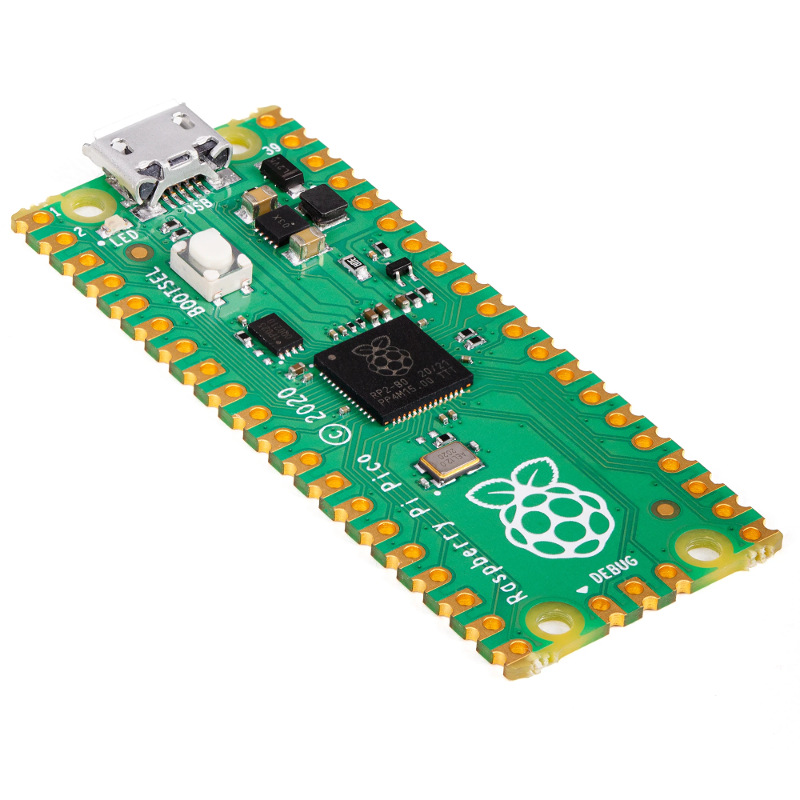On the 21st of January, 2021, the Raspberry Pi Foundation released its own microcontroller board called the Raspberry Pi Pico. Despite its name, the Pico is a microcontroller, not a small microcomputer (i.e., a Single Board Computer or SBC) like the Raspberry Pi, uses a different CPU chipset (the RP2040, a proprietary design by the Raspberry Pi Foundation), and is significantly smaller and cheaper than any Pi at US$4.
Specification#
 |
- 21 mm × 51 mm form factor
- RP2040 microcontroller chip designed by Raspberry Pi in the UK
- Dual-core Arm Cortex-M0+ processor, flexible clock running up to 133 MHz
- 264KB on-chip SRAM
- 2MB on-board QSPI Flash
- 26 multifunction GPIO pins, including 3 analogue inputs
- 2 × UART, 2 × SPI controllers, 2 × I2C controllers, 16 × PWM channels
- 1 × USB 1.1 controller and PHY, with host and device support
- 8 × Programmable I/O (PIO) state machines for custom peripheral support
- Supported input power 1.8–5.5V DC
- Operating temperature -20°C to +85°C
- Castellated module allows soldering direct to carrier boards
- Drag-and-drop programming using mass storage over USB
- Low-power sleep and dormant modes
- Accurate on-chip clock
- Temperature sensor
- Accelerated integer and floating-point libraries on-chip
Pinout#
Links#
- Pico Specification
 (Raspberry Pi Foundation)
(Raspberry Pi Foundation)
- Getting Started
 (Raspberry Pi Foundation)
(Raspberry Pi Foundation)
- Getting Started with Raspberry Pi Pico
 (34.6MB PDF, local copy)
(34.6MB PDF, local copy)
- Raspberry Pi Pico Python SDK
 (2.8MB PDF, local copy)
(2.8MB PDF, local copy)
- Hardware design with RP2040
 (19.7MB PDF, local copy)
(19.7MB PDF, local copy)
- RP2040 Datasheet
 (4.9MB PDF, Raspberry Pi Foundation)
(4.9MB PDF, Raspberry Pi Foundation)
- RP2040
 on Wikipedia
on Wikipedia